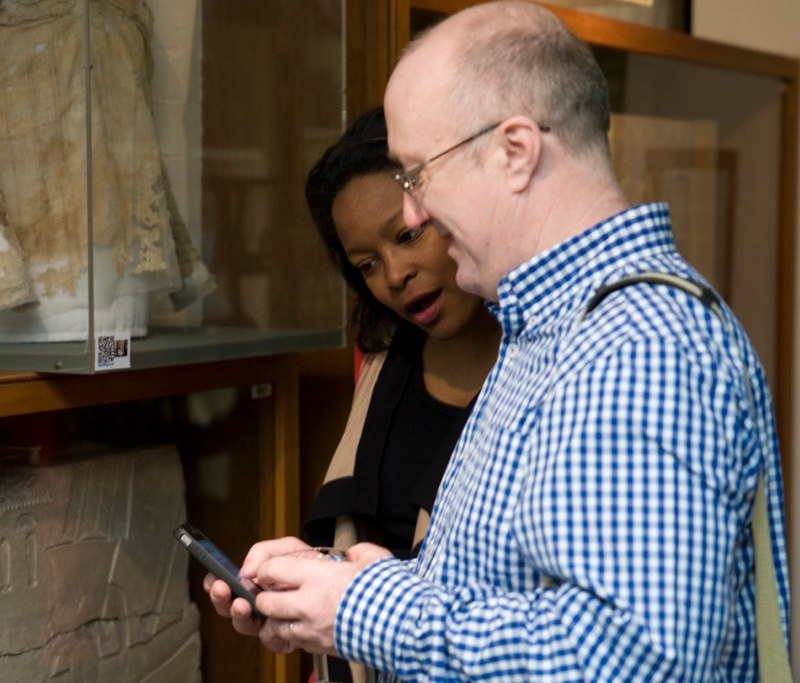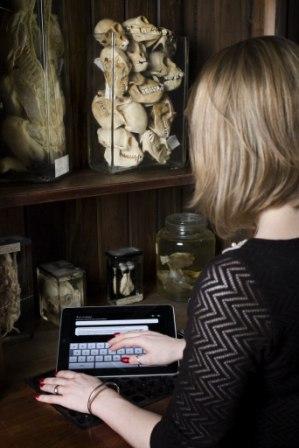
Digital technologies are beginning to play a vital role in the work of museums and galleries, whether on websites and handheld devices or in gallery displays and many are using digital technology in innovative ways to support visitor experiences. They are becoming more embedded, and networked, and are changing the experience of visiting museums be providing more flexible and personalised information and to encourage interaction and discussion between visitors. The distinctions between real and virtual, are already blurred, creating a new set of relationships between objects, visitors and digital technology, in which museums are, above all, places of exploration and discovery.
In particular the development of mobile technology has become very important to museums and many are in exploring how digital and communication technologies can be developed to offer visitors a more interactive, personalised museum experience. This growing emphasis on the interactional and informal nature of museum experience provides the perfect opportunity to showcase digital interactive technologies as important resources for engaging visitors in exhibits and more generally in museums as a whole. In general, however, despite the growing interest in deploying digital technology as interpretation devices in museums and galleries, there are relatively few studies that examine how visitors, both alone and with others, use new technologies when exploring museum content.
At UCL we are trying to change that. It is not enough to claim that digital technology can enhance visitor museum experiences, it needs to be demonstrated. UCL’s Department of Civil, Environmental and Geomatic Engineering, Centre for Digital Humanities (aka us) and Centre for Advanced Spatial Analysis are working with UCL Museums and Collections to develop research projects which look specifically at digital technology in museums. The Petrie Museum is currently host to 4 digital projects.
QRator – an iPad-based interactive live object label. This allows everyone to have a say in how an museum object is interpreted. Unique in the UCL technology is the ability to ‘write’ back to the museum interpretation panel. QRator allows member of the pubic to type in their thoughts and interpretation of the object and click send. These comments become part of the objects history and ultimately the display itself.
Talesof Things – connect to object information via QR codes and add your own tale. Throughout the Petrie galleries are a series of QR code tagged objects which can be read by iPhone and Android phones. Once a code has been scanned it connects the visitor to the Tales of Things site which contains text, video, and audio information about the object. Visitors can then add their own tale about that object on the site.
iCurator– curate your own exhibition in a 3D environment and collaborate remotely. ICurator is a computer based design tool which holds a library of 3D rendered objects, display cases and museum spaces which users can combine to create their own displays.
3D Encounters – 3D scanning technologies creating digital models of ancient artefacts. 3D Encounters is an experimental digital exhibition entitled Crossing Over, where visitors can see 3D digital models of artefacts from the Petrie collection. The models can be rotated from angles and perspectives not possible in the real displays.
Last week saw the Digital Think Drink at the Petrie Museum; it gave us a chance to trial and receive some user feedback on the four digital projects which aim to change the way people engage with material heritage. The Petrie Museum was acting as a lab where real world applications for new technologies can be developed and tested. It was great to see people using the technology in gallery and to be able to hear people’s opinions on the research that we are doing. The digital think drink was an experiment, we hope everyone enjoyed it. It prompted a lot of questions which we will be trying to answer as we move forward with the development and research of whether or not digital technology can increase access and engagement with museum collections.
Image by UCL, Petrie Museum / Matt Clayton
 QRator has now been rolled out to the Museum of Brands, offering an interactive experience for visitors via the QRator iPads and the website. Further details can be found on the QRator website.
QRator has now been rolled out to the Museum of Brands, offering an interactive experience for visitors via the QRator iPads and the website. Further details can be found on the QRator website. Close
Close



 The latest episode of the
The latest episode of the 
